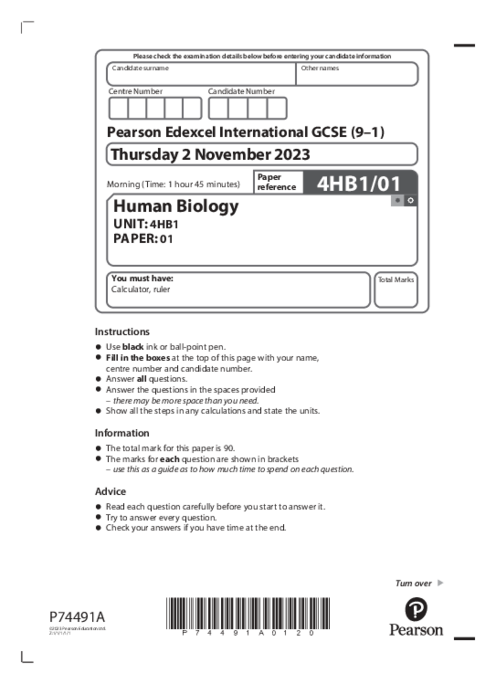Human Biology 4HB1/01 November 2023
omer uner
1. Blood and circulation: blood component roles (RBC, lymphocytes, phagocytes, platelets, plasma), clotting importance, differences in blood glucose levels in diabetic vs. non-diabetic, glucose tolerance testing, urine test for glucose.
2. Blood flow during exercise: increased blood flow to muscles, heart, skin; decreased to gut; constant to brain; total flow increase; thermoregulation through skin blood flow; tissue fluid exchange function.
3. DNA and cell cycle: DNA replication before mitosis, graph-based DNA mass changes, mitosis vs. meiosis, structure and differences between DNA and RNA, mutation effects on phenotype and enzyme function.
4. Genetic coding: codon calculation (3-base, 4-letter code), mutation consequences, causes (e.g., radiation), silent mutations, enzyme function loss due to shape change from mutation.
5. Kidney and osmoregulation: nephron labeling (Bowman′s capsule, PCT, loop of Henle, collecting duct), ultrafiltration, selective reabsorption, urine volume regulation via ADH in hot vs. cold conditions.
6. Heart and blood vessels: vena cava and pulmonary artery as deoxygenated carriers, chamber wall thickness due to pressure differences, coronary artery blockage effects, tissue fluid role in diffusion and exchange.
See More Paper 1 6 months ago
Human Biology (4HB1) Subject directory
All resources in one place
Related Past Papers
Related Tutorials
Crash report

